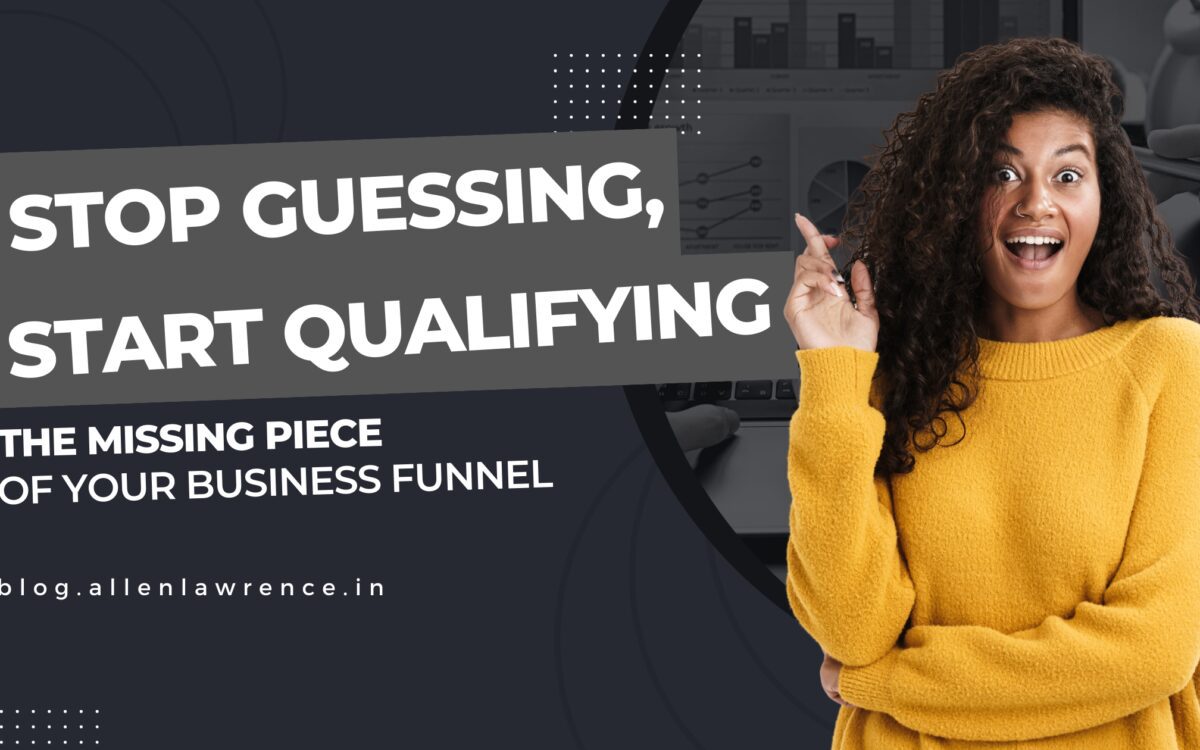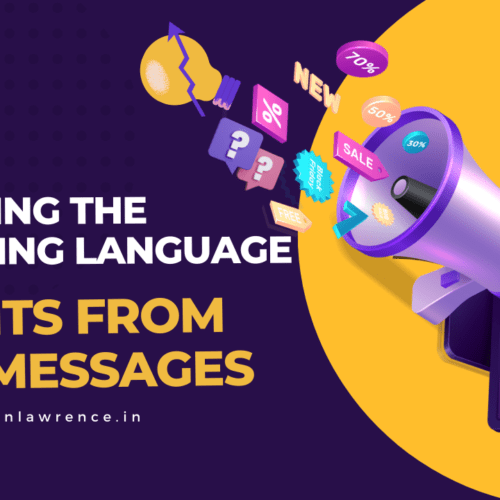Introduction
In the dynamic world of business, the interplay between clients, leads, companies, and marketers often boils down to a critical issue: expectation versus reality. This gap can lead to dissatisfaction, miscommunication, and ultimately, failed projects or partnerships. The solution to this pervasive problem is qualification. In this article, we will explore what qualification entails, its core components, and how it can be implemented for different stakeholders. Additionally, we will delve into case studies, statistics, and tools that can facilitate a smoother qualification process.
What is Qualification?
Qualification is a crucial process in the business ecosystem. It involves filtering clients or setting expectations for end users, viewers, or customers regarding the outcomes of a project. By establishing clear, realistic expectations, businesses can significantly improve satisfaction and outcomes across all parties involved. It is about asking the right questions, developing a system for engagement, and tailoring offers based on qualification signals. By doing so, businesses can streamline their processes, enhance satisfaction, and increase efficiency.
Core of Qualification
Asking the Right Questions
The foundation of effective Qualification lies in asking the right questions. This involves understanding the needs, goals, and limitations of clients, leads, or customers. Questions should be tailored to uncover crucial information that can guide the decision-making process.
Developing a System Around Asking Questions While Maintaining Engagement
To maintain engagement while asking these important questions, businesses need to develop a systematic approach. This system should be consistent, ensuring that all relevant questions are asked, while also being engaging enough to keep the client's interest.
Offers Based on Qualification Signals (Redirecting Based on Answers)
Qualification should not just be about asking questions; it should also involve interpreting the answers and making offers based on these Qualification signals. This means redirecting clients or customers based on their responses to ensure that they are provided with the most suitable solutions.
How to Implement Qualification?
For Customers
Implementing qualification for customers involves understanding their needs, preferences, and expectations. Here's the stages achieve this:
- Initial Assessment: Start by asking customers about their specific needs and objectives. This could be done through surveys, interviews, or initial consultation meetings.
- Clear Communication: Ensure that customers understand what your product or service can realistically achieve. Set clear expectations regarding timelines, costs, and deliverables.
- Ongoing Engagement: Maintain regular communication with customers to address any changes in their needs or expectations. Use feedback loops to continuously improve the customer experience.
Steps to Implement Qualification for Customers
- Initial Interaction:
- Use surveys and questionnaires during the first interaction.
- Ask about specific needs, budget, and expected outcomes.
- Follow-Up Questions:
- Dive deeper into the customer's responses.
- Clarify any ambiguities and understand the context of their needs.
- Engagement System:
- Develop a system to regularly check in with customers.
- Use CRM tools to track responses and interactions.
- Tailored Offers:
- Based on the qualification data, present solutions that match their specific requirements.
- Highlight how these solutions meet their expectations.
Example Questions for Customer Qualification
- What specific problem are you looking to solve?
- What is your budget range for this project?
- What is the timeline you are working with?
- Have you used similar services/products before? If so, what was your experience?
- What are the key outcomes you are expecting?
For Clients
Qualification for clients is crucial to building long-term, successful partnerships. Here’s how to implement it:
- Detailed Discovery Sessions: Conduct in-depth discovery sessions to understand the client’s business goals, challenges, and expectations.
- Tailored Proposals: Develop proposals that are tailored to the specific needs of the client, highlighting how your services can address their pain points.
- Mutual Agreement: Ensure that both parties agree on the project scope, deliverables, and success metrics before commencing work.
Steps to Implement Qualification for Clients
- Discovery Phase:
- Conduct thorough initial meetings to understand the client's business, goals, and challenges.
- Use detailed questionnaires to gather comprehensive information.
- Needs Assessment:
- Analyze the gathered information to identify the client's specific needs.
- Discuss potential solutions and align them with the client's goals.
- Expectation Setting:
- Clearly communicate what can and cannot be achieved.
- Set realistic timelines and budgets.
- Ongoing Engagement:
- Regularly update clients on progress.
- Use project management tools to keep track of milestones and deliverables.
Example Questions for Client Qualification
- Can you describe your business and its goals?
- What challenges are you currently facing?
- What are your primary objectives for this project?
- What is your budget and timeline?
- How do you prefer to communicate and receive updates?
For Marketers
Marketers play a pivotal role in bridging the gap between companies and clients. Here’s how to qualify marketers:
- Skill and Experience Assessment: Evaluate the marketer’s skills, experience, and past performance. Ask for case studies or examples of previous work.
- Alignment with Company Goals: Ensure that the marketer’s strategies align with the company’s overall business objectives.
- Performance Metrics: Define clear performance metrics and KPIs to measure the success of marketing campaigns.
Steps to Implement Qualification for Marketers
- Initial Assessment:
- Conduct a comprehensive audit of the company's current marketing efforts.
- Understand the company's goals, target audience, and competition.
- Detailed Planning:
- Develop a marketing plan based on the qualification data.
- Set clear objectives, strategies, and metrics for success.
- Execution and Monitoring:
- Implement the marketing plan with a focus on qualified leads.
- Regularly monitor performance and adjust strategies as needed.
- Feedback Loop:
- Create a system for regular feedback from the company and its customers.
- Use this feedback to refine and improve marketing efforts.
Example Questions for Marketer Qualification
- What are your primary marketing goals?
- Who is your target audience?
- What marketing channels have you used in the past, and what were the results?
- What is your budget for marketing?
- How do you measure marketing success?
Case Studies and Statistics
Case Study 1: Salesforce Improves Lead Conversion with B2B Qualification
- Company: Salesforce, a CRM software giant
- Challenge: High lead volume but low conversion rates to paying customers.
- Solution: Implemented a lead scoring system that assigned points based on factors like company size, industry fit, and budget. Leads with high scores received personalized outreach, while lower-scoring leads were nurtured with educational content.
- Results: Salesforce reported a 50% increase in qualified leads and a 37% improvement in conversion rates to paying customers within a year.
Case Study 2: Webflow Streamlines Onboarding with Client Qualification
- Company: Webflow, a website design platform
- Challenge: Client dissatisfaction due to unclear project scope and mismatched expectations.
- Solution: Webflow revamped their onboarding process to include in-depth discovery calls during the qualification stage. These calls focused on understanding client goals, budget limitations, and desired website functionalities.
- Results: Webflow reported a 65% decrease in client churn rate within the first year of implementing the new onboarding process with qualification. They also noted a significant improvement in client satisfaction scores.
Case Study 3: Amazon Prioritizes Customer Support with Ticket Qualification
- Company: Amazon, the e-commerce giant
- Challenge: High volume of customer support tickets with varying urgency levels, leading to longer resolution times.
- Solution: Amazon integrated a system that asks customers a series of multiple-choice questions during support ticket submissions. These questions categorized issues based on urgency (e.g., incorrect order vs. technical website problem).
- Results: Amazon reported a 20% reduction in average customer support resolution time and a corresponding increase in customer satisfaction.
Statistics on Qualification Effectiveness
Lead Qualification:
- The Aberdeen Group reports that companies with a strong lead qualification process improve their sales productivity by 13%.
- MarketingSherpa finds that nurtured leads produce, on average, 50% more sales-ready leads than non-nurtured leads. Qualification is a key part of effective lead nurturing.
Client Onboarding:
- According to Totango, companies with a structured onboarding program see a 63% higher chance of retaining new customers. Effective onboarding often involves qualifying clients to ensure they're a good fit.
- Salesforce reports that companies with a strong onboarding process improve their customer lifetime value by 8%.
Customer Support:
- SuperOffice states that companies that prioritize qualifying customer support requests experience a 33% reduction in support resolution times.
- Zendesk (as you mentioned) also reports a 20% improvement in first call resolution rates for businesses that leverage qualification in customer support.
Tools to Implement Qualification
CRM Systems
- Salesforce: A comprehensive CRM that allows for detailed lead and client qualification.
- HubSpot: An all-in-one CRM platform that integrates qualification processes seamlessly.
- Zoho CRM: A customizable CRM that can be tailored to specific qualification needs.
- Bigin by Zoho: A small platform with expansive functionality and user-friendly design, easy to learn and implement.
Survey and Questionnaire Tools
- Typeform: An interactive form builder that makes it easy to create engaging qualification surveys.
- SurveyMonkey: A robust tool for creating detailed surveys to gather qualification data.
- Google Forms: A free and simple tool for collecting qualification information.
- Tally Forms: A easy-to-use, easy to implement, cheap alternative with 6000+ integrations
Project Management Tools
- Trello: A visual project management tool that helps track qualification processes and client interactions.
- Asana: A versatile tool for managing tasks, projects, and client communication.
- Monday.com: A flexible platform for organizing and tracking qualification steps and project progress.
- Bigin by Zoho: A small platform with expansive functionality and user-friendly design, easy to learn and implement.
Conclusion
Qualification is an essential process for aligning expectations and reality in business relationships. By asking the right questions, developing a structured system, and tailoring offers based on qualification signals, businesses can significantly improve their efficiency, satisfaction, and success rates. Implementing qualification for customers, clients, and marketers ensures that all parties are on the same page, leading to more effective and fulfilling partnerships. By utilizing case studies, statistics, and the right tools, businesses can streamline their qualification processes and achieve better outcomes.





One comment on “Stop Guessing, Start Qualifying – Missing Piece in Your Business Puzzle”